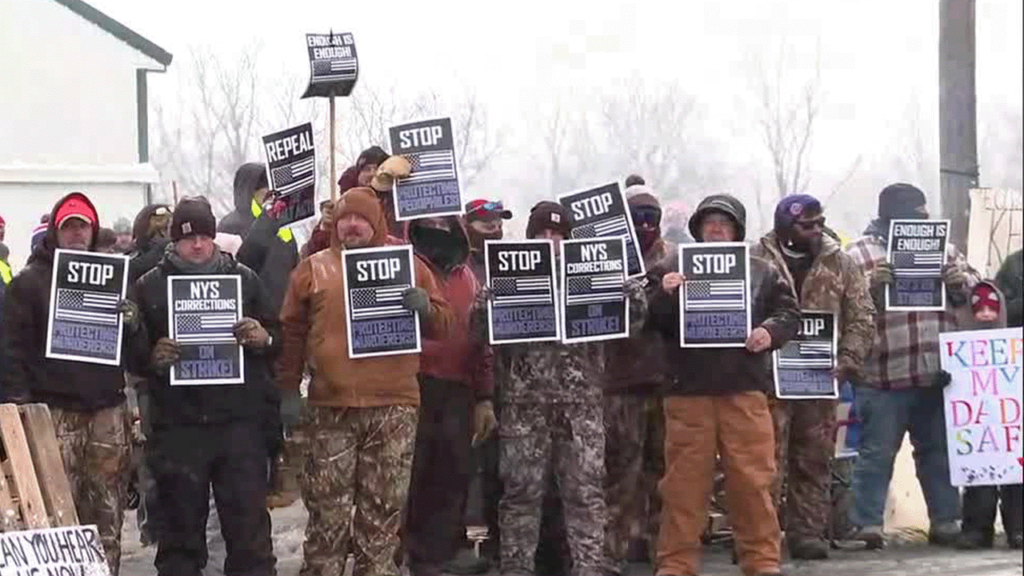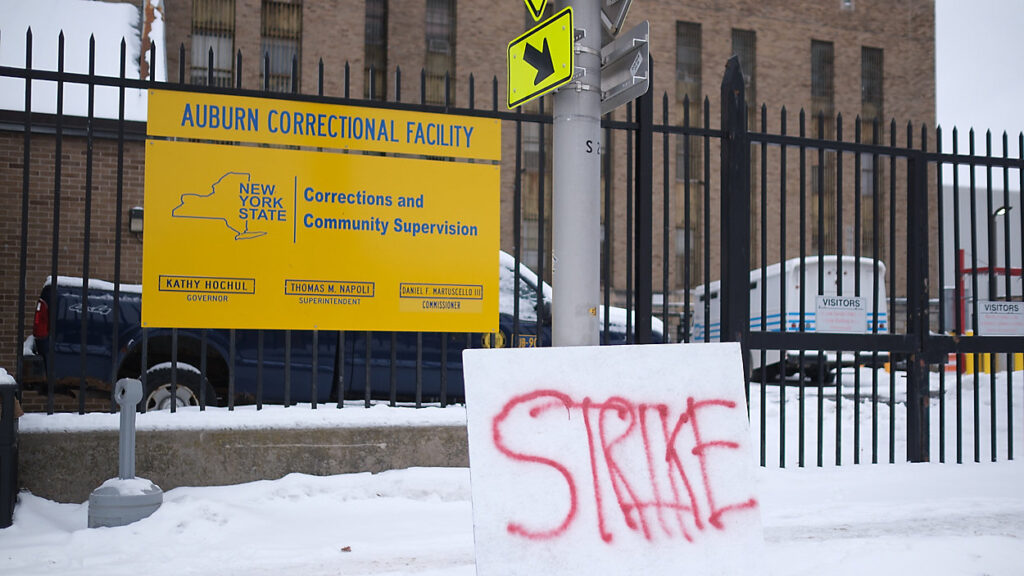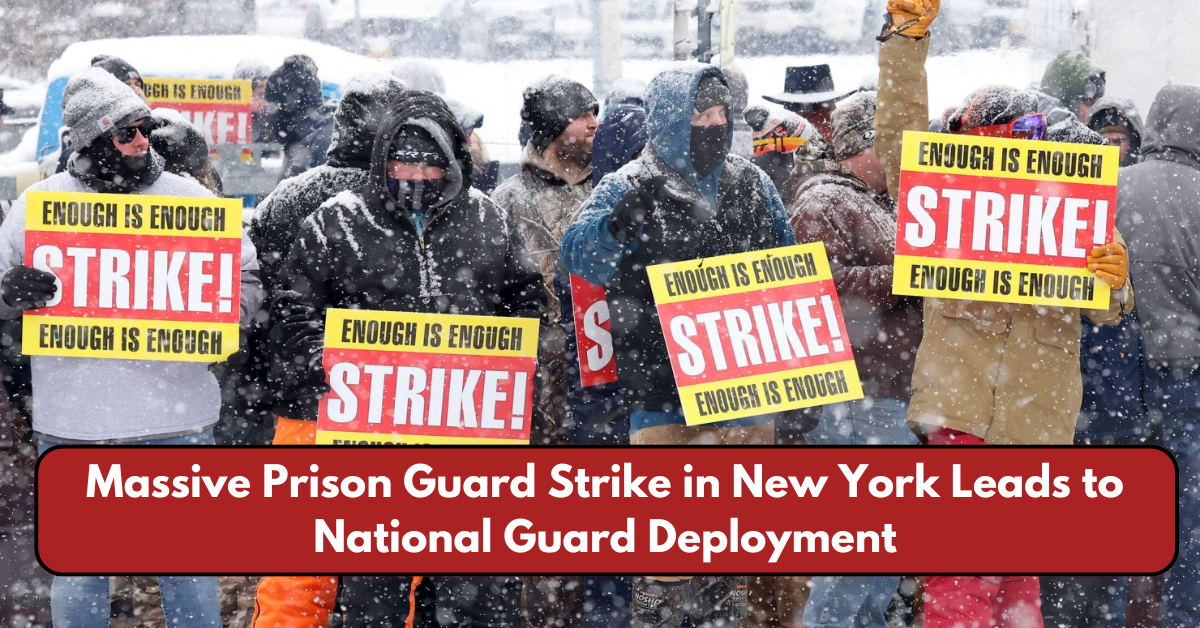New York’s prison system is facing a major crisis as thousands of correctional officers have gone on strike across 30 state-run correctional facilities.
The strike, which began earlier this week, has caused significant disruptions, with prisons experiencing lockdowns and the National Guard being deployed to maintain security.
The reasons behind the strike include staffing shortages, mandatory overtime, and concerns over officer safety, particularly due to recent reforms like the HALT Act.
What Triggered the Strike?
The primary reasons for the strike include:
- Understaffing & Mandatory Overtime: Officers say they are overworked due to chronic understaffing, leading to forced overtime and exhaustion.
- Violence & Safety Concerns: Prison guards argue that reforms limiting the use of solitary confinement have made managing violent inmates much more difficult.
- Recent Violent Incidents: Several high-profile attacks on officers, including a violent inmate uprising at Riverview Correctional Facility, have raised concerns over security.
- Legislation & Policy Changes: The HALT Solitary Confinement Act, which reduces the use of solitary confinement, has been widely criticized by correctional officers as weakening their ability to control violent prisoners.
According to the New York State Correctional Officers and Police Benevolent Association (NYSCOPBA), officers feel unsupported and vulnerable due to these issues, prompting the unauthorized strike.

How the Strike is Impacting New York Prisons
With officers walking off their jobs, several prisons have been placed on full lockdown, meaning that inmates are confined to their cells, and all visitations have been suspended. Key issues include:
- Suspended Inmate Programs: Prison services like educational programs, rehabilitation sessions, and visitations have been halted.
- Inmate Uprisings & Lockdowns: At least one violent incident at Riverview Correctional Facility saw inmates seize control of dormitories for several hours before officers regained control.
- Deployment of the National Guard: In response, Governor Kathy Hochul has deployed 3,500 National Guard members to assist in running prison operations, including meal distribution and basic security.
Government Response & Legal Implications
Governor Hochul’s Actions
Governor Kathy Hochul has condemned the strike, citing the Taylor Law, which prohibits public sector employees in New York from striking. She has:
- Filed legal action to penalize striking officers.
- Issued emergency orders to maintain prison operations.
- Deployed the National Guard to manage essential prison functions.
Union’s Position
The NYSCOPBA, which represents over 18,000 correctional officers, has denied officially authorizing the strike but has acknowledged officers’ frustrations. The union is currently negotiating with the state to demand:
- Increased hiring of correctional officers to address understaffing.
- Higher wages and benefits to retain staff.
- A reassessment of the HALT Act to restore the use of restrictive housing for violent inmates.
For updates on union negotiations, visit NYSCOPBA’s official page.
What’s Next?
Potential Outcomes
- Continued Negotiations – The state and union representatives will meet to discuss possible policy changes and staffing adjustments.
- Legal Repercussions – The state may take disciplinary action against striking officers under the Taylor Law, which could result in fines or job suspensions.
- Escalation of Prison Tensions – With inmate violence rising, concerns grow over whether National Guard personnel can effectively manage the situation.

Broader Implications
The outcome of this strike will have a lasting impact on New York’s correctional system. If the state fails to address officer concerns, New York may see:
- Increased officer resignations, further worsening understaffing.
- More dangerous prison conditions, with reduced officer presence increasing risks.
- Potential rollback of the HALT Act, if political pressure grows to restore previous solitary confinement policies.
For more details on prison policies and ongoing negotiations, visit the New York State Legislature.
Conclusion
The New York prison guard strike represents a major turning point in the state’s correctional system. While officers demand better working conditions, safety reforms, and higher wages, the state is struggling to maintain order in its prisons.
As tensions continue, the coming weeks will determine whether government intervention, union negotiations, or legal consequences will resolve this ongoing crisis.
This article has been carefully fact-checked by our editorial team to ensure accuracy and eliminate any misleading information. We are committed to maintaining the highest standards of integrity in our content.

A senior at Yale-NUS College with interests in developmental and labour economics, as well as creative non-fiction and poetry. Currently, I’m studying as an Economics major and an Arts and Humanities minor (focusing on Creative Writing) with heavy involvement in the Singaporean journalism scene and involved in research on economic history and educational policy. I’m working as an author for The Octant, Yale-NUS’ student publication, as a writer for Wingspan, Yale-NUS’ alumni magazine, and as a tutor for the NUS Libraries Writer’s Centre. | Linkedin




